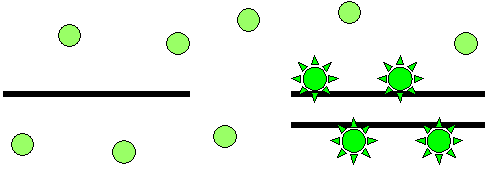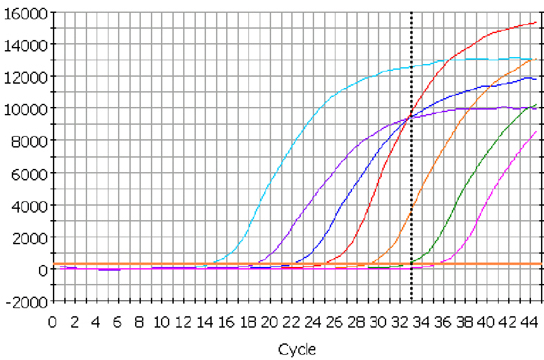The Interdepartmental Equipment Facility
Real Time PCR

The 7300 Real-Time PCR System from Applied Biosystems carries out Real-Time Polymerase Chain Reaction. It provides a quantitative method for determination of specific DNA and RNA sequences in tissue samples.
The PCR system consists of a Peltier based thermal cycler, with a 96-well block. It can be used with both 96-well plates and 0.2 mL tubes. The temperature can be ramped at 1.6oC / sec, and is accurate within 0.5oC.
The optical system consists of a 150-watt tungsten-halogen lamp as excitation source, a single excitation filter, four emission filters and a CCD camera. The 7300 RT-PCR was calibrated at installation for several dyes including: SYBR Green, FAM, VIC, JOE, NED, TAMRA and ROX
The instrument monitors a fluorescence signal, which increases in parallel with the amplification of a PCR product - double stranded DNA. Specific gene sequences can be quantified using this detection system with a broad dynamic range: at least five orders of magnitude, without laborious post-PCR processing.
Experimental setup and data analysis are facilitated by software for primer-design, experiment layout and for quantitation of nucleic acid sequences, using the test results. Results are available directly after PCR with no additional purification or analysis required.

SYBR green is frequently used in real-time PCR reactions to monitor DNA synthesis. The dye binds to double stranded DNA but not to single-stranded DNA, and fluoresces very brightly when bound - much more brightly than ethidium bromide. Also the ratio of fluorescence in the presence of double-stranded DNA to the fluorescence in the presence of single-stranded DNA is much higher that the ratio for ethidium bromide.
The DNA content doubles each PCR cycle, and the SYBR-green fluorescence increases with cycle-number. A series of 10-fold dilutions is typically used to determine the DNA content of the original sample.
